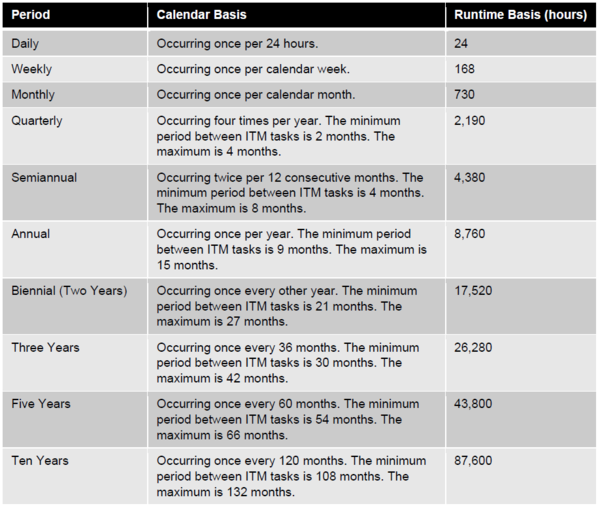Task Frequency (IIAR 6, Part 7)
Say you have a task to perform a compressor inspection annually. On year one you complete the task on July 1 which results in the same task being due on July 1 of the next year. When next year rolls around, other obligations have filled the calendar during this period. In order to prevent the task from becoming past-due, you knock it out early, on June 15. If the same situation occurs in subsequent years, before long the task that was originally due in July is being performed in the spring.
The “date creep” described in the hypothetical scenario above is a common occurrence in PSM programs. In an effort to prevent tardy activities, the due dates of reoccurring tasks tend to inch forward over time. ANSI/IIAR 6-2019 §5.2 remedies this problem in Table 5.2 which defines the calendar basis of reoccurring frequencies used in the standard:

Additionally, §5.2.1 allows for further deviation in task frequency based on prior operating history:As the table demonstrates, IIAR 6 has built in flexibility for when reoccurring tasks can be completed. For example, an annual task would be considered compliant if performed within 9 -15 months of the previous task completion.
“Where a history of deficiencies has been recorded, the (ITM) task frequencies shall be increased. Where a history of fault-free operation has been recorded, the (ITM) task frequencies are permitted to be decreased. In either case, a determined change in a (ITM) task frequency and its technical justification shall be documented.”
These simple clarifications in IIAR 6 will serve our industry well and provide much needed, common sense flexibility when completing reoccurring ITM tasks.
This is Part 7 of a series on IIAR 6. You can access previous blogs in this series below:

Leave a Reply